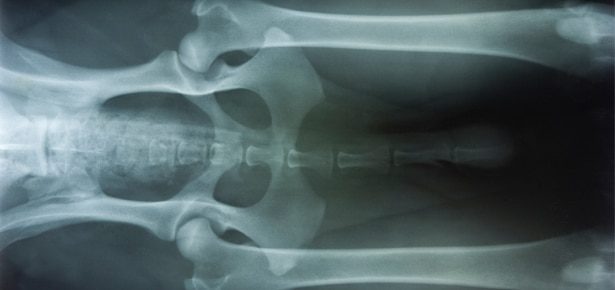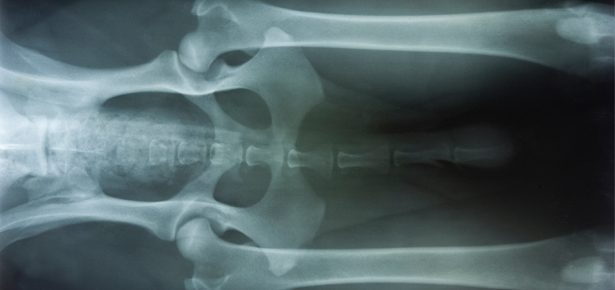

Managing Hip Dysplasia In Dogs
Did you know all breeds can get it?
Hip dysplasia, a condition that results from poor joint and bone health, can significantly alter your dog's quality of life. Though larger breeds like Labrador retrievers, Mastiffs and German Shepherds are especially prone to hip dysplasia, dogs of all ages and breeds can develop the painful condition.
Genetics often takes the blame, but there are many causes of hip dysplasia in dogs. Dr. Jacqueline Davidson, clinical professor at the Texas A&M College of Veterinary Medicine & Biomedical Sciences, explains how the condition can develop in dogs of all ages and breeds. "Hip dysplasia is considered to be multifactorial, meaning there are many factors that determine whether an individual will be affected," she said. "Genetics is one factor, but it is not simple. Breeding dogs that are free of hip dysplasia will reduce the risk of puppies with hip dysplasia; however, it is possible for a puppy to develop the condition even if the parents were not affected."
In the early stage of hip dysplasia, there is abnormal excessive movement in the joint. The loose-fitting bone causes abnormal cartilage wear and remodeling of the joint, resulting in inflammation. The inflamed joints lead to osteoarthritis, which can become more severe over time. "Lameness becomes apparent as the osteoarthritis develops," said Davidson. "With severe arthritis, a dog may be lame or reluctant to be active, and may have restricted hip joint motion." In younger dogs, specific signs include a "bunny-hop gait," while dogs who have developed a more advanced case of hip dysplasia experience more serious signs. "In dogs with more advanced disease, they may be lame in one or both legs," Davidson explained. "They may have difficulty rising, and they may take short steps with the hind legs, resulting in a 'waddling' gait with a lot of hip motion. As they shift weight to their front legs, they may develop bulky muscles in the front legs and wasting muscles in the hind legs."
Though hip dysplasia can cause your pet to experience serious pain, helping your dog maintain a lean body weight will help reduce the effects of the condition. Providing daily light exercise will also help your dog develop strong muscles which can support their joints more effectively. If your dog does show signs of developing hip dysplasia, your veterinarian can determine the best treatment options.
“Initially, the osteoarthritis associated with hip dysplasia is managed medically,” explained Davidson. “Arthritic pain can be managed by nonsteroidal anti-inflammatory drugs (NSAIDs), along with other pain medications, if indicated. Supplements of fish oil can also help reduce joint inflammation. Supplements of chondroitin and glucosamine may be beneficial in some individuals, but ineffective in others.”
If medical management is not sufficient to preserve your dog’s quality of life, then surgery may be necessary to eliminate the inflamed joint. A femoral head ostectomy (FHO), a surgical procedure that removes the femoral head from the joint, may work well for some patients; however some dogs still show dysfunction after this surgery.
“Since the joint is gone, they may always have a gait abnormality, but the goal is for them to be pain free. Keys to the success of this procedure are related to both the surgical technique and the postoperative rehabilitation,” Davidson explained. Another surgical procedure includes a total hip replacement (THR). While most dogs have excellent results with this surgery, not all patients are good candidates for this procedure. Your veterinarian must review your dog’s medical history, perform a physical examination, and assess their radiographs before deciding if a THR is the best option for your pet.
Although some breeds are more susceptible to hip dysplasia than others, many dogs are at risk for developing the condition. If you think your dog is displaying signs of hip dysplasia, your veterinarian will be able to discuss therapeutic options.
Join the newsletter and never miss out on dog content again!
"*" indicates required fields
By clicking the arrow, you agree to our web Terms of Use and Privacy & Cookie Policy. Easy unsubscribe links are provided in every email.





